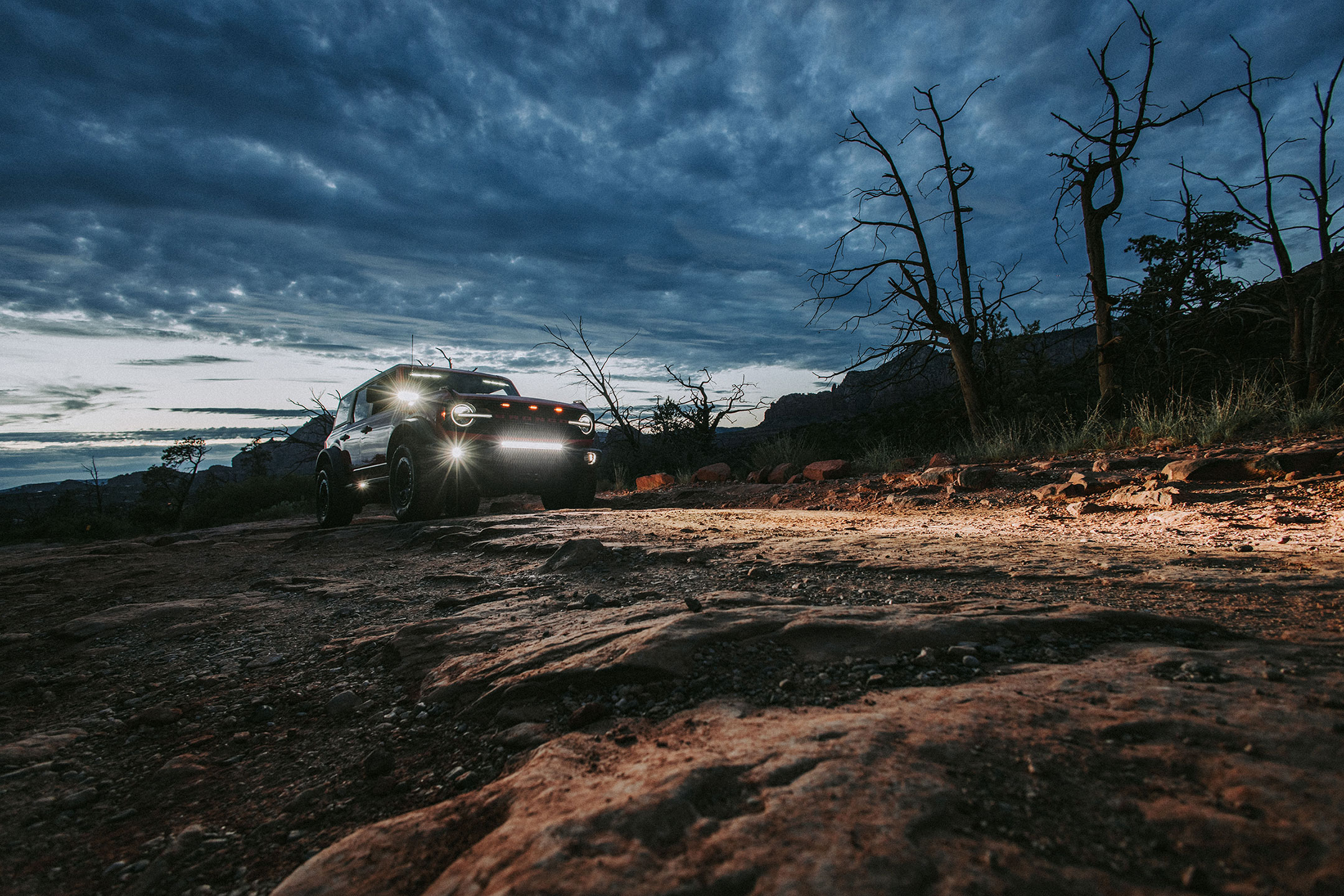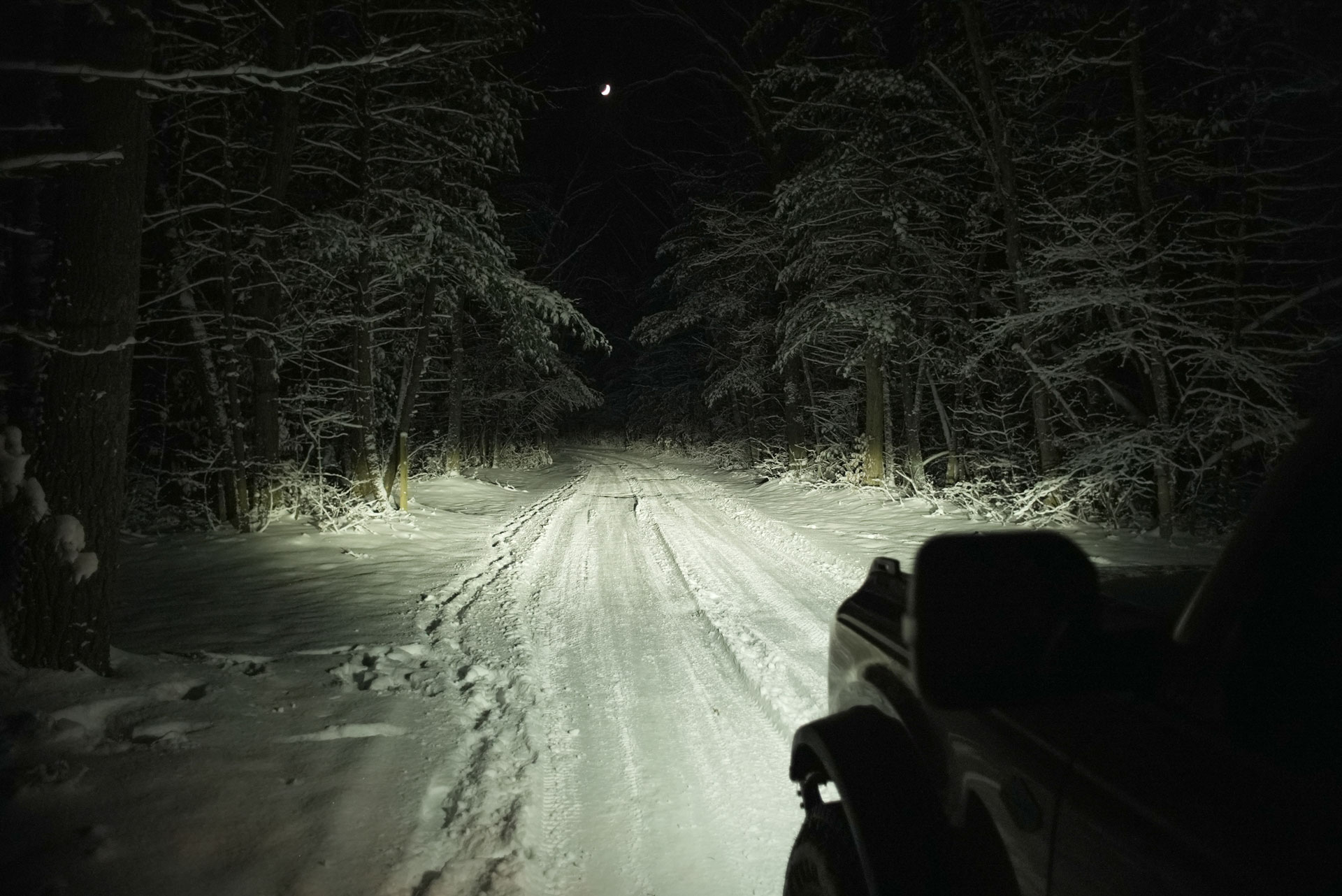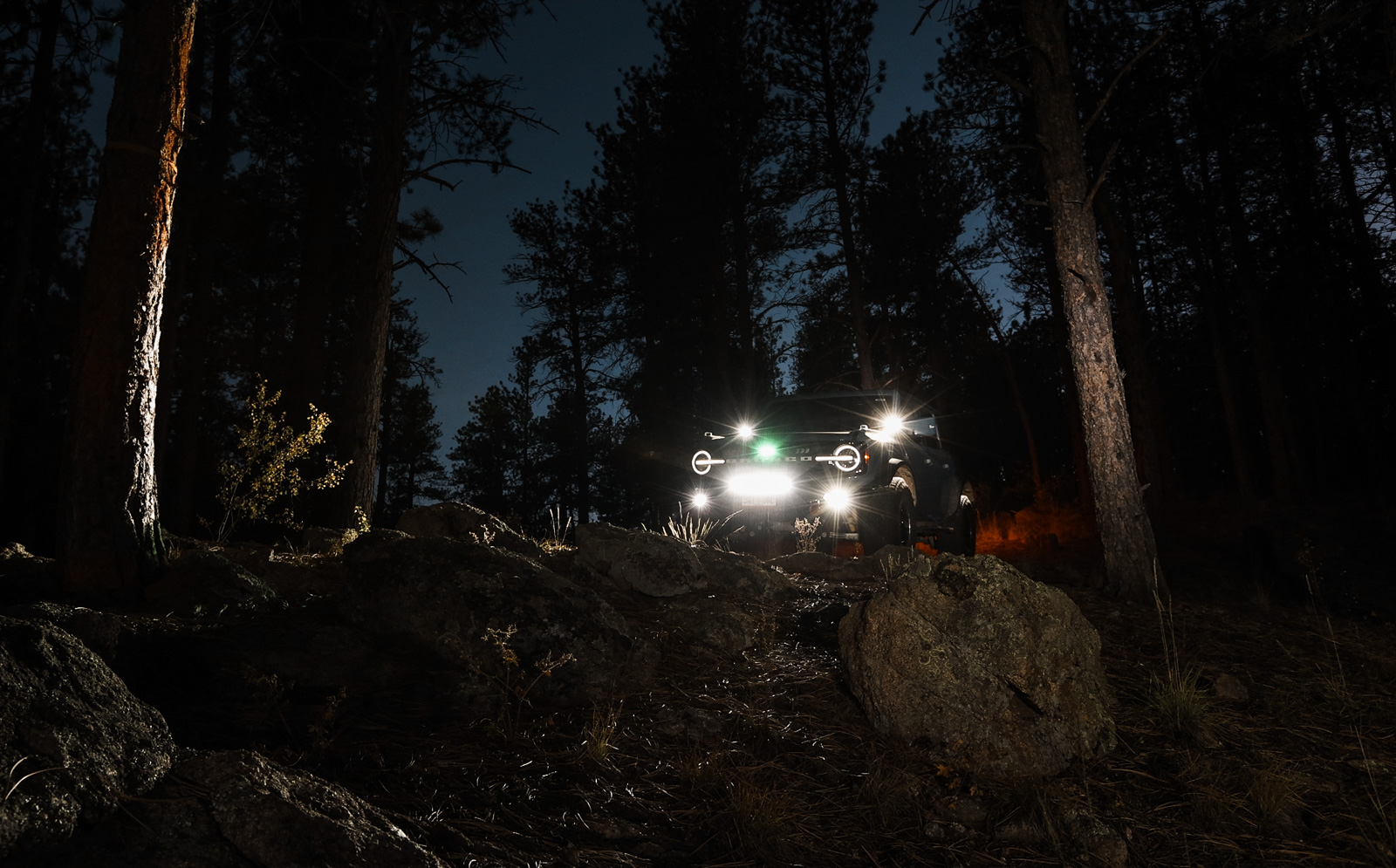Off-roading is always a fresh experience, even when you’re on the same trail. Seasoned veterans know that the time of the year, and even mother nature can completely change the makeup of the terrain you ride on, changing the way you handle it.
Each terrain brings its own set of fun challenges, bringing a unique driving experience, and sometimes, specialized equipment for dealing with those challenges.
More often than not, you’ll come across what we consider as the five most common types of off-road terrain. We’ll talk about their makeup, what you should be aware of while traversing, how the terrain could impact your vehicle, and offer practical insights to enhance your safety, and enjoyment.
Before We Begin, Let’s Talk About 4WD
One common theme that spans across any off-roading terrain is the use of four-wheel drive (4WD).
Be it mud, sand, rock, or snow, crawling without 4WD is not recommended.
Four-wheel drive offers you better control and traction in any situation by distributing power evenly to all wheels. The controlled engagement of 4WD allows off-roaders to navigate all terrains with increased confidence, knowing that each wheel is actively contributing to forward momentum.
In situations where sudden acceleration is needed to power through soft spots, 4WD provides the necessary torque to propel you through. Whether you’re engaging the 4WD low range for added torque or knowing when to lock differentials for maximum traction, understanding your vehicle’s 4WD capabilities is important to conquering the terrains.
Mud: Navigating the Quagmire
Mud. Slop. Muck. With its varying names, and consistency, mud poses a formidable challenge to off-roaders. From soft and sticky bogs to thick and gooey pits, concealing potential obstacles beneath its surface, mud demands a delicate balance between momentum and caution.
Techniques & Tips
Traction: Traction is crucial, emphasizing the need for aggressive tire tread patterns to shed mud and maintain grip in unpredictable conditions. If you can, clear out your treads as much as possible between deep mud sections. Tread width helps with seemingly bottomless mud and helps the vehicle to “float” on top. In shallower mud, skinnier, yet tall tires tend to dig down deep in order to grab the hard packed mud at the bottom.
Momentum: Momentum is key to avoid getting stuck, but strategic planning is necessary to navigate through deep mud safely. Take a moment to examine your route on foot as well as you can before taking the plunge.
Winches: Winches play a pivotal role in self-recovery when vehicles get bogged down in mud, providing a lifeline when traction falters, and preventing the need for external assistance.
The intricacies of mud navigation, from the importance of tire selection and aggressive tread patterns to the use of a winch to get you out of trouble, will keep you having fun in the slop.

Sand: Not As Easy As A Day At The Beach
Sandy terrains vary from loose, powdery dunes to compacted sand trails, and the shifting nature of sand poses a unique challenge, demanding constant adaptation.
Techniques & Tips
GPS: A critical tool you should consider investing in is a GPS. Dunes are known to change shape, even overnight, making it easier to get lost and more difficult to plan a route.
Tire Pressure: Lowering tire pressure enhances the tire footprint, providing better traction on loose sand, a crucial technique for overcoming the instability of this often warm and comfortable terrain.
Momentum: Just as it is with mud, momentum plays a key role in off-roading on the sand. Sudden stopping or slowdowns can lead to sinking, or spinning your tires. Planning your path and maintaining a consistent speed will help you stay above the shifting sands.
Sand Dynamics: Understanding sand dynamics involves recognizing how the movement of sand affects the stability of the terrain and, consequently, the vehicle’s performance.
- Effect of Tire Tracks: As a vehicle moves through sandy terrain, it leaves behind tracks. These tracks can actually impact stability. Following established tracks can provide a more stable surface, reducing the risk of getting stuck.
- Sand Reclamation: Sand has a tendency to shift and fill in voids, meaning that tire tracks left behind can fill with sand over time. This phenomenon can affect subsequent vehicles, making it necessary to adapt driving techniques based on the evolving terrain.
- Side Sloping: Driving along the sides of dunes or hills can lead to what’s called side sloping, where the sand may be less stable.
- Sand Waves and Ripples: Sandy terrains often exhibit patterns such as waves or ripples. These areas can impact vehicle stability, and drivers need to learn to read these features to anticipate changes in sandy terrain dynamics.
Off Roading on the sand can be as fun as a day on the beach as long as you make a plan and be aware of how the sand is laid out. Don’t forget your goggles to keep the sand from your eyes!
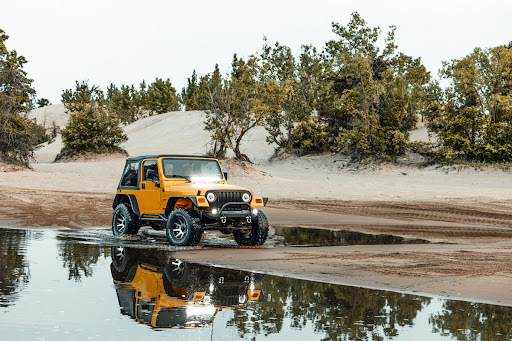
Rocky Terrain: Nature’s Obstacle Course
Rugged and uneven (but a whole lot of fun), rocky terrains demand precision, careful maneuvering, and planning. Vehicle durability is tested against the abrasive nature of rocks, making tire selection and proper driving techniques high on the list of importance.
Reinforced sidewalls, slow and controlled movements, and strategic tire placement take center stage in conquering rocky landscapes. Let’s talk about navigating nature’s obstacle course with finesse.
Techniques & Tips
Tire Selection: Tire selection should prioritize reinforced sidewalls for protection against punctures from sharp rocks, ensuring durability and reducing the risk of flats.
Driving Technique: Slow and controlled driving prevents damage to both the vehicle and the terrain, allowing for careful tire placement to negotiate obstacles. 4WD vehicles with an available low range typically have an advantage here.
Ground Clearance: Ground clearance and approach/departure angles become your main focus for preventing the vehicle from getting stuck or damaged, requiring careful consideration of the vehicle’s positioning to ensure safe passage.
Many people think of slow rock climbs when they think of off-roading, and for good reason. It’s one of the most technically difficult, and most rewarding terrains in all of off-roading. Mount up.
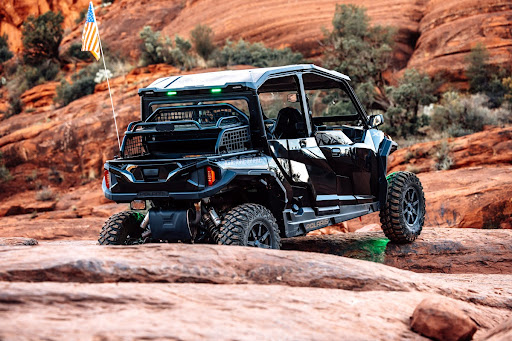
Snow: Driving Through The Winter Wonderland
As winter blankets landscapes in snow, off-road enthusiasts face yet another new set of challenges. From deep-powder passes to compacted trails, snow requires specialized planning.
Snow or winter tires with distinct tread patterns, the advantages of four-wheel drive, and a heightened awareness of hidden obstacles beneath the snow are essential elements in navigating winter wonderlands.
Techniques & Tips
Tire Selection: Most off-road tires are rated well for snow travel. Just be sure that your tire size and ground clearance are ideal for the depth of snow that you plan to traverse. Snow or winter tires with specialized tread patterns provide enhanced grip and maneuverability in icy and snowy conditions, ensuring safety and control. Much like mud, tread width helps with deep snow, and helps the vehicle to “float” on top. In shallower snow, skinnier, yet tall tires tend to dig down deep in order to grab the hard packed snow at the bottom.
Four-Wheel Drive: Four-wheel is used on almost all terrains, but reserves a special place in the snow. By distributing power evenly to all wheels, 4WD offers better control and traction in the snow.
Obstacle Awareness: Hidden obstacles beneath the snow, such as rocks or tree branches, is a quick way to turn a good day into a bad day. Analyze the path you’re on as much as possible, on foot if needed, to ensure you won’t end up damaging the underbody of your vehicle.
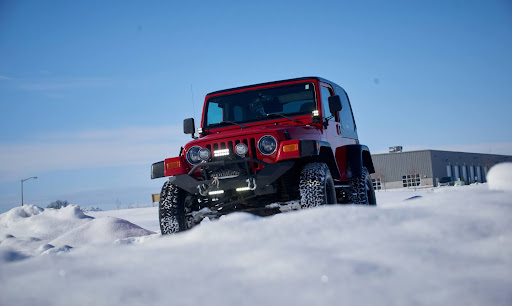
Dirt/Gravel Trails: Commonly Found Fun
Dirt and gravel trails, likely the best choice for beginners, or those interested in high speed, can still come with their own set of nuances. Varying degrees of compactness and loose sections demand a balanced approach.
All-terrain tires, adapted to a mix of on-road and off-road conditions, come into play. Confident yet cautious driving through loose gravel and a readiness for unexpected obstacles form the core of this section.
Techniques & Tips
Tire Selection: All-terrain tires strike a balance between on-road and off-road performance, suitable for a variety of conditions encountered on dirt and gravel trails.
Steering Control: Navigation through loose gravel requires attention to steering control to prevent sliding, so find a balance between control and adaptability.
Confidence: Compacted dirt trails offer the fun of higher speeds. Be confident and always be looking at what’s up ahead. Doing so will allow you to reach higher speeds than any other terrain, and really get you hooked on off-roading (as if you weren’t already).
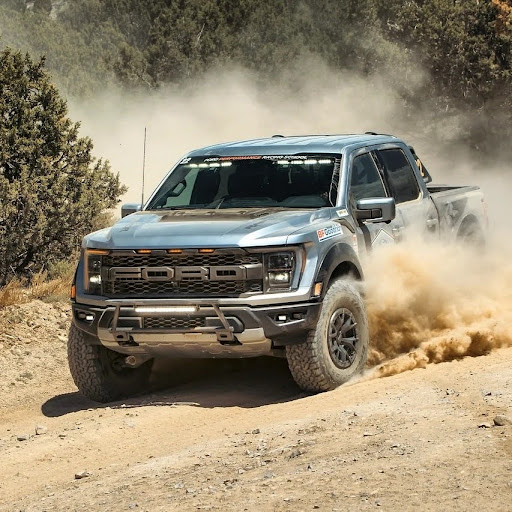
General Tips: Off-Road Wisdom for Every Terrain
Beyond the details of each terrain we’ve discussed, a set of universal tips serves as a foundational guide for off-road adventurers.
From tire selection considerations to the importance of upgraded suspension systems, understanding approach and departure angles, and honing essential off-road driving skills, there are universal insights applicable across the terrains.
Tire Selection: We’ve mentioned it numerous times, so we hope you’re catching on. Choosing the right off-road tires for the specific terrain, whether mud terrain (MT), sand terrain (AT), all-terrain (AT), or snow tires, choosing wisely helps ensure optimal performance and fun.
Suspension: Upgraded suspension systems help absorb jolting shocks and maintain stability over uneven terrain, providing a smoother ride and reducing the risk of damage to the vehicle.
Confidence & Skill: Develop off-road driving skills, such as proper throttle control, effective use of differential locks, and a keen understanding of the terrain, enhancing safety and confidence in navigating diverse off-road landscapes.
The best way to do so? Keep off-roading.
Ready to plan your next expedition? Check out our full range of indestructible, high-quality, off-road lighting. If you’re ready to outfit your ride, find a retailer here.
Articles You Might Like
-
March 31, 2025
Bronco Owners, Level Up!
Introducing the Dual-Color Interior Lightbar that Transforms Your Rig -
December 16, 2024
Illuminating the Bright Ideas Shaping the Next Generation of Off-Road Lighting
Illuminate your off-road adventures with mpower
There are no street lights where you’re headed. That’s the way you like it. But whether you’re headed up the side of a mountain, getting down and dirty in a mud bog, or racing across snow-covered fields, you’d better have a clear view of whatever lies ahead.
